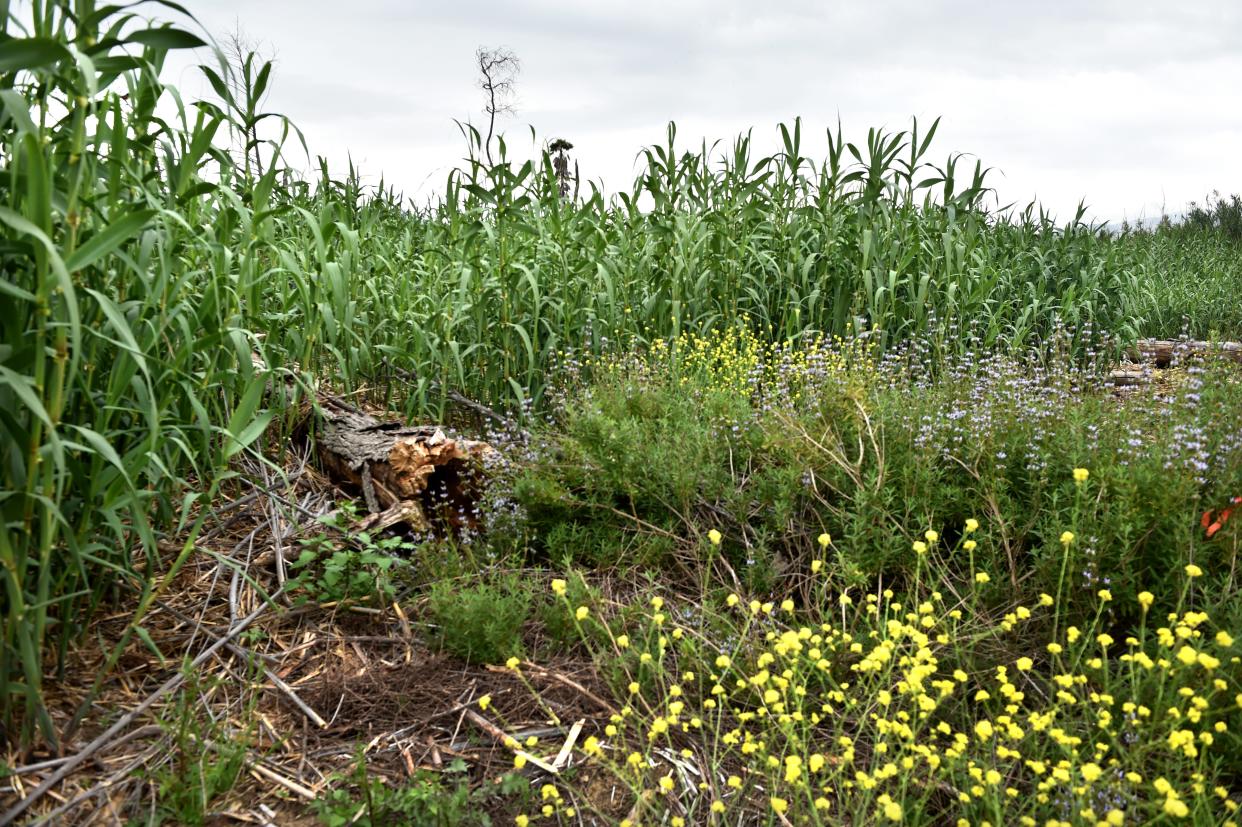Eco-tip: Snipping green tape to cut water-wasting weed

Sometimes environmental regulations make good environmental projects more difficult.
For example, everyone agrees giant reed, or arundo donax, should be removed from our rivers, but each removal project requires extensive permitting.
Now, that is about to change.
To trim the green tape preventing the cutting of giant reed stalks, the Ojai Valley Land Conservancy, in partnership with the Ventura County Resource Conservation District, obtained grant funding from Cal Fire to create programmatic permits. Such permits will enable the conservation district to serve as a sponsoring agency, an umbrella organization overseeing reed removal projects organized by the conservancy and others.
The giant reed is an invasive, exotic plant that crowds out native vegetation. It eliminates habitat for local species, poses a fire danger when dry and sucks up more than five times the water consumed by the typical streamside plants it replaces.
Organizations including the Army Corps of Engineers, California Department of Fish and Wildlife, U.S. Fish and Wildlife Service, State Water Board, Ventura County Watershed Protection District and others regulate how the plant can be removed.
Of course, these requirements have valid purposes. The reed grows to 30 feet high, and improper cutting for removal can cause roots and stems to flow downstream. There, the invading pieces establish new colonies, sometimes growing so thick they change the course of streams.
Even simply sending workers into a stream bed to prevent re-sprouting by removing the deep roots can change the course of a stream. Changing streams can change water flows and flood patterns.
Other concerns include habitat. Although giant reed does not provide habitat for native species — apart from sometimes being selected as a well-screened, long-term camping site for certain humans — nesting sites are sometimes in nearby vegetation. Noise and vibration during nesting seasons can harm wildlife.
Even disposal of reed pieces is a difficult issue. Because pieces can re-sprout, cut reeds cannot be disposed with other yard waste and turned into mulch. It must be either landfilled or cut into smaller pieces and dried before being used as mulch, with ongoing monitoring to ensure none re-sprouts.
The Resource Conservation District’s programmatic permit will cover these concerns and more. The district has oversight responsibilities to ensure projects comply with environmental standards.
Entities organizing under the district’s auspices include not only nonprofits but also entities such as the flood control division of the Ventura County Public Works Agency. As a permit condition, the division removes invasive plants and restores native habitats as a mitigating offset for natural habitats affected by flood control projects.
Since the task of removal is so massive and expensive, harnessing a profit motive for its removal has always been a dream of business-minded environmentalists. In 1993, Nile Fiber, a Seattle-based company, harvested hundreds of tons of local giant reeds, dried the material, and sold it to paper mills experimenting with “treeless paper” alternatives. However, the venture did not prove to be financially sustainable.
In the early 2000s, Floral Gift and Home Décor, a Somis-based company with a factory in Oxnard, experimented with using reeds as part of dried flower arrangements distributed nationally. Consumers rejected the different look of the new product.
Incentives available from Ventura County’s recycling market development zone, including loans financed at 4% interest, may be available for business ventures using the reed. Contact me for more information.
In the meantime, reed eradication permitting will get easier under programmatic permitting and related efforts.
On Sept. 13, the Ventura County Board of Supervisors found a reed removal project planned by the Ojai Valley Land Conservancy to be categorically exempt from the California Environmental Quality Act and approved county Fire Protection District funding of the project with a $350,000 grant provided by Cal Fire.
The conservancy will proceed, using the watershed protection district's streambed alteration agreement from state wildlife officials and a biological opinion from the federal wildlife service.
The Resource Conservation District’s programmatic permit will be another step forward in cutting the green tape of environmental regulation.
“We have a programmatic permit for projects in the Santa Clara River, and soon we will have one for the Ventura River as well,” said Andy Spyrka, resource conservationist for the district.
To plan a reed removal project, contact Spyrka at 805-764-5135.
David Goldstein, an environmental resource analyst with the Ventura County Public Works Agency, can be reached at 805-658-4312 or david.goldstein@ventura.org.
This article originally appeared on Ventura County Star: Eco-tip: Removing arundo may get easier in Ventura County

